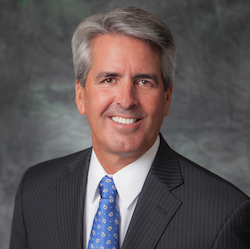In response to the pain Americans have been hit with from the coronavirus, Congress put forth legislation, turning this into a tsunami for housing, and the administration seems to be betting that only a few mortgage companies will be swept away.
Why on earth would they take the chance when the housing market could be swept away, too? The administration, FHFA, and regulators have put policy in place that could wreak long-term havoc on the entire mortgage market if they don’t finish what they started.

Guest Author
By virtually eliminating any barrier to entry to obtain forbearance, policymakers have created outrageous moral hazard with potential costs that are unfathomable. To be clear, unlike the last recession when borrowers had to prove hardship in order to qualify for a forbearance plan, a move made to make sure that taxpayers were only helping those who truly were in need, the current regime has opened this up to any and all homeowners with a loan from the GSEs or the GNMA programs.
This means that even people still employed, earning their regular pay and able to make the payment on their home, can simply opt in for a free “put” provided by the federal government to be paid for first by private industry and backed up by the taxpayer.
But in doing so, policy makers thrust billions of dollars of liquidity risk right on top of the financial services sector that may take down the system entirely if they don’t adhere to their responsibility. Here is why: when a borrower enters a forbearance plan under the new guidelines the servicer still has to send the Principal and Interest payments to the MBS investor, still make sure the insurance payments are made, and pay all property taxes for that borrower.
To put this in perspective, the Mortgage Bankers Association stated in their March 22 letter to Treasury Secretary Mnuchin and Federal Reserve Chairman Powell, “that if approximately one-quarter of borrowers avail themselves of forbearance for six months or longer, advancing demands on servicers could exceed $75 billion and could climb well above $100 billion.” The MBA went on to state that policy makers must state that, “they will provide liquidity to otherwise solvent companies in order to support borrowers through this challenging time.”
The fact is that while congress and the administration were moving quickly to save homeowners from concern, they went too far by opening it up to all, regardless of need, and risk taking down the entire mortgage finance sector with it. In short, it is as though Congress called in the fire department to put out the fire, but asked someone else to pay the multibillion dollar water bill.
This is fixable, but regulators at FHFA and Treasury seem to be casting a blind eye to this massive risk exposure they created by putting into place a program filled with moral hazard and without any consideration to the burden placed on the private sector.
GNMA already stepped in and broadened the scope of a facility that could provide liquidity for the FHA, VA, and USDA programs by advancing the funds needed to pay the MBS holders on behalf of servicers.
In addition, once the 180-day period is over, or 360 days if the borrower gets an extension, the servicer can file a partial claim with HUD and get reimbursed for all those advances, thus making GNMA and the servicer whole. It’s not perfect, but it’s a far better model than providing zero support.
But the GSEs have yet to step in. It’s not that hard, really. They need to do two things with absolute clarity:
First, they need to create an advance facility for servicers to tap into in order to advance the P&I to investors until the forbearance ends. This could be done with the servicer pledging their MSRs and it could be specific to each respective GSE.
Second, they need to be clear on the options post-forbearance in order to replenish the advances provided. Whether a second lien held on the GSE’s balance sheet, a loan modification, a payment plan established, tacked on the end of the loan similar to a partial claim that FHA uses — something they have available to implement now, or put into the advances account, there are options that must be announced and executed for market players.
By not acting, or by leaving the industry less than certain about the enormous burden potentially thrust on the private sector by this legislation and supported by the administration, they are violating standard commercial sensibilities and have already added an enormous tax on the mortgage system.
Bid-ask spreads have widened, servicing bids have all but dried up or are being severely curtailed, lenders are having to pull back on minimum credit score, maximum DTI, certain loan products, and more. The Jumbo market is all but gone, especially in the third-party channels. In short, any prospective homebuyer right now is more likely to find fewer or no options for mortgage financing. This is greatly the outcome of the massive uncertainty surrounding the rollout of these federal interventions.
The urgency around this obligation for the administration to support the problem they helped create is severe, and the current apparent deafness toward this need is alarming. “Act now” needs to be our industry’s battle cry.
The administration seems to think that only the first one or two dominoes will fall. Given what we went through just a decade ago, why on earth take the chance?







